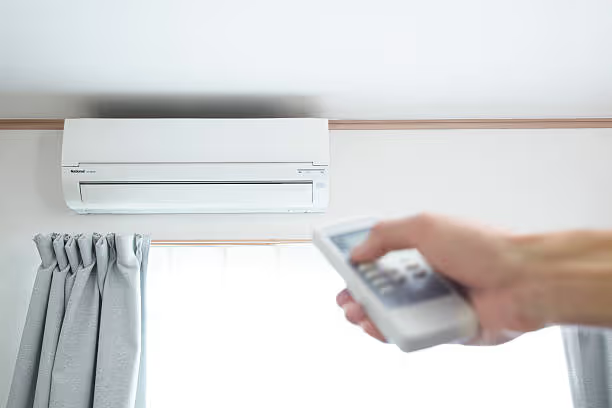Mini Split Replacement in Dunedin, FL

When your ductless mini-split system is no longer reliable, it’s time to consider replacement. For Dunedin, FL homeowners, this decision impacts comfort and energy bills. Older systems may require frequent, costly repairs, consume more energy, use obsolete R-22 refrigerant, or perform inconsistently. Evaluating the system's age, repair history, energy bills, refrigerant type, and performance can help determine if replacement is the best option. Upgrading to a high-efficiency system offers superior comfort, lower energy consumption, and dependable operation. Consider SEER ratings, proper sizing, and single- vs. multi-zone configurations when selecting a new unit. Professional installation ensures peak performance and longevity, including careful site preparation, correct electrical connections, refrigerant line installation, and thorough system commissioning for optimal comfort.

Professional Mini-Split Replacement in Dunedin, FL
When your ductless mini-split system is no longer providing the reliable comfort you depend on, you face a critical decision: should you invest in another repair or is it time for a full replacement? For homeowners in Dunedin, FL, where efficient cooling is a necessity, making the right choice can significantly impact your comfort, energy bills, and peace of mind. A failing mini-split doesn't just cause inconvenience; it can lead to soaring utility costs and unpredictable performance. Opting for a strategic replacement ensures you benefit from the latest technology, superior energy efficiency, and dependable operation for years to come.
Is It Time to Replace Your Ductless Mini-Split?
Knowing when to move on from an old unit can be challenging. While repairs can sometimes offer a temporary fix, there are clear indicators that a replacement is the more sensible and cost-effective long-term solution. Evaluating these factors can help you make an informed decision for your Dunedin home.
The Age of Your SystemA well-maintained ductless mini-split typically has a lifespan of 12 to 15 years, with some lasting up to 20 years. However, as a unit ages, its efficiency naturally declines. If your system is approaching or has surpassed the 10-year mark and is starting to show signs of trouble, replacement often becomes the most logical path forward. Investing in a new system avoids the cycle of pouring money into an aging unit with a limited future.
Increasingly Frequent and Costly RepairsOne or two minor repairs over several years is normal. However, if you find yourself scheduling service calls multiple times a year, the costs can quickly add up. A good rule of thumb is the 50% rule: if the cost of a single repair is 50% or more of the price of a new, comparable system, replacement is the smarter financial investment. Constant breakdowns are a clear sign that critical components are failing, and a complete system failure may be imminent.
Rising Energy BillsHave you noticed your electricity bills creeping up without a change in your usage habits? This is often a symptom of a failing HVAC system. As mini-splits age, they lose their efficiency and must work harder and longer to achieve the same level of cooling or heating. A new, high-efficiency model can dramatically reduce your energy consumption, and the monthly savings can help offset the initial investment over time.
Obsolete Refrigerant (R-22)If your mini-split system was manufactured before 2010, it likely uses R-22 refrigerant, also known as Freon. The production and importation of R-22 have been phased out due to its harmful environmental impact. As a result, its availability is scarce and extremely expensive. If your older system develops a refrigerant leak, the cost to recharge it can be prohibitive. Upgrading to a modern system that uses the environmentally friendly R-410A refrigerant is not only a responsible choice but a practical one.
Inconsistent Performance and ComfortIs one room freezing while another stays warm? Does your unit struggle to keep up on the hottest Dunedin days? If your mini-split can no longer maintain a consistent, comfortable temperature, it’s a sign that it has lost its capacity. This could be due to a failing compressor, worn-out fan motors, or other deteriorating parts. A new system will restore powerful, even, and responsive climate control to your space.
Selecting Your New High-Efficiency Mini-Split System
Choosing a replacement isn't just about getting a new unit; it's an opportunity to upgrade your home's comfort and efficiency. We help you navigate the options to find the perfect fit for your needs.
Energy Efficiency Ratings (SEER)The Seasonal Energy Efficiency Ratio (SEER) measures a mini-split's cooling efficiency. The higher the SEER rating, the less energy it consumes to cool your home. Given Florida’s long cooling season, investing in a unit with a high SEER rating can translate into substantial savings on your monthly utility bills. We can explain the different ratings and help you find a model that balances performance and cost.
Proper Sizing for Your SpaceA common mistake is assuming a bigger unit is always better. An oversized mini-split will cool the room too quickly without properly dehumidifying the air, leading to a cold, clammy feeling. An undersized unit will run constantly without ever reaching the desired temperature, causing excessive wear and high energy use. Our technicians perform precise load calculations based on your home’s size, layout, insulation, and window placement to ensure your new system is perfectly sized for optimal performance and efficiency.
Single-Zone vs. Multi-Zone ConfigurationsDuctless technology offers incredible flexibility. If you need to climate-control a single area, like a garage, sunroom, or master bedroom, a single-zone system (one indoor unit connected to one outdoor unit) is ideal. If you want to create different temperature zones in multiple rooms, a multi-zone system allows you to connect several indoor units to a single outdoor condenser, giving you customized comfort throughout your home.
The Professional Installation Process
A high-quality mini-split replacement is only as good as its installation. Our meticulous process ensures your new system is set up for peak performance, longevity, and safety.
First, we carefully remove and responsibly dispose of your old unit and its components. We then prepare the site for the new equipment. This includes strategic placement of the indoor and outdoor units. The indoor air handler is positioned to deliver the best possible airflow without creating uncomfortable drafts. The outdoor condenser is placed on a solid, level pad with adequate clearance for ventilation and future servicing.
Next, we handle all electrical connections, ensuring the new system has the proper voltage and is wired according to all local Dunedin codes for safe operation. We then expertly run and insulate the refrigerant lines that connect the indoor and outdoor units, creating a sealed, efficient pathway for thermal exchange.
Once everything is connected, we perform a thorough system commissioning. This critical final step involves pressure testing the lines, pulling a vacuum to remove any moisture or contaminants, and charging the system with the precise amount of refrigerant specified by the manufacturer. We test every function, verify airflow, and ensure the unit is delivering powerful, efficient comfort exactly as it should. We leave your home clean and provide a clear walkthrough of your new system’s operation.










